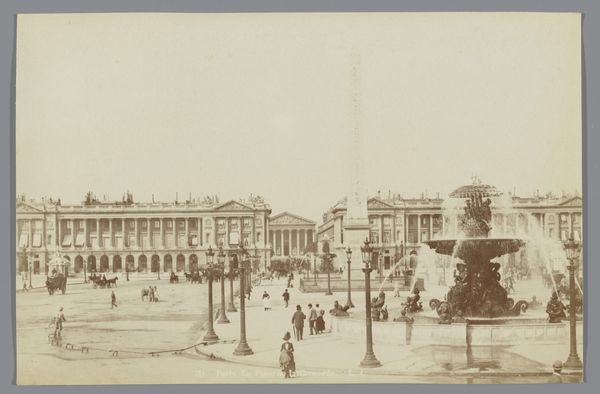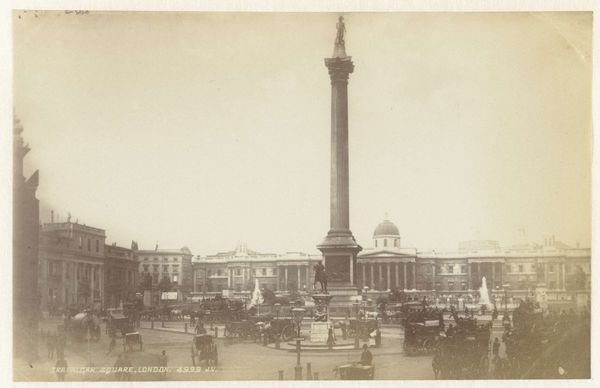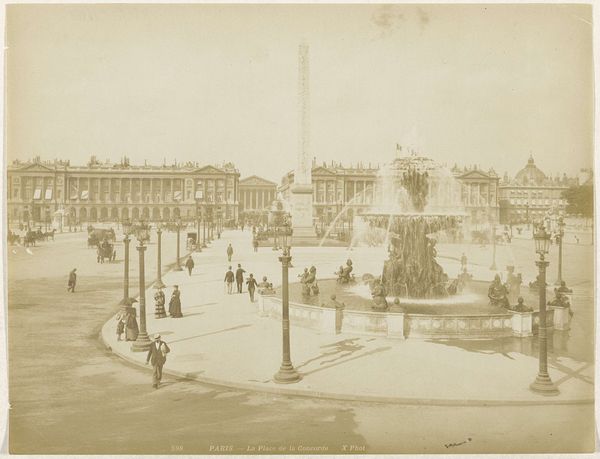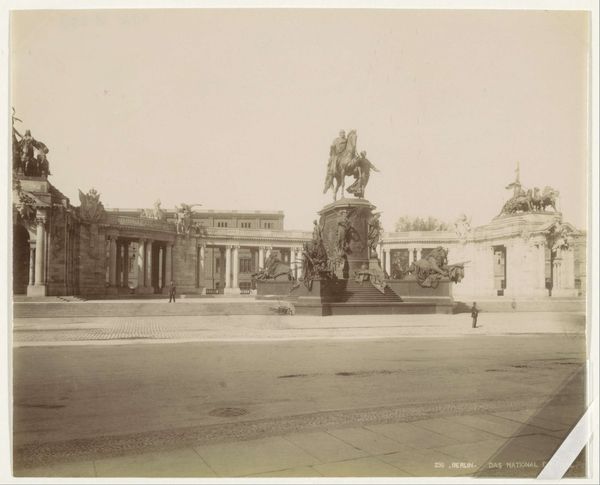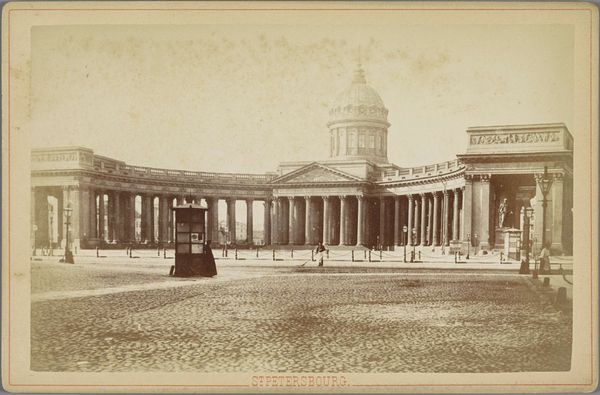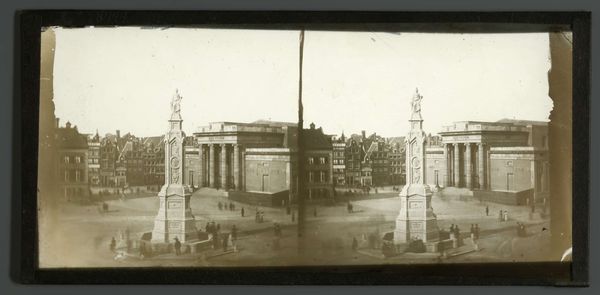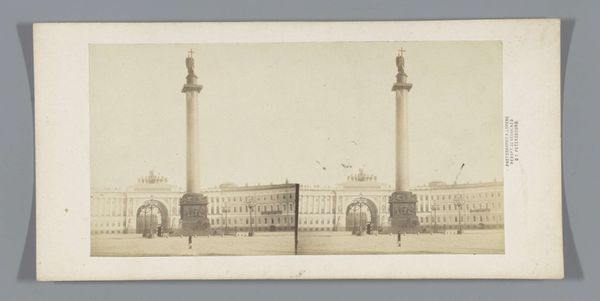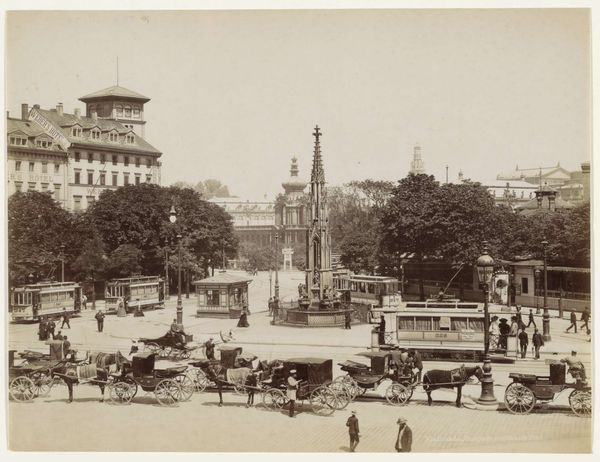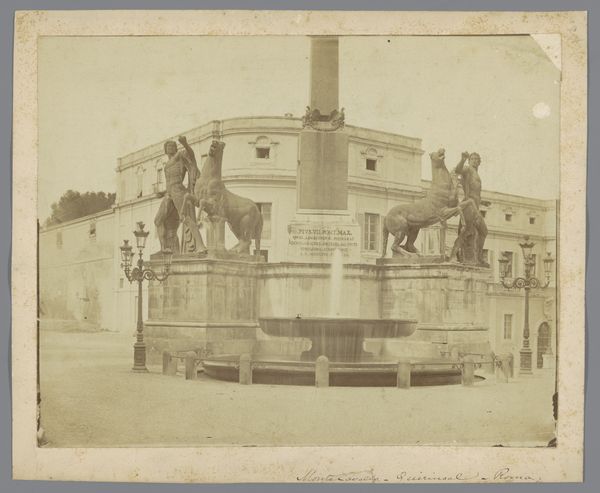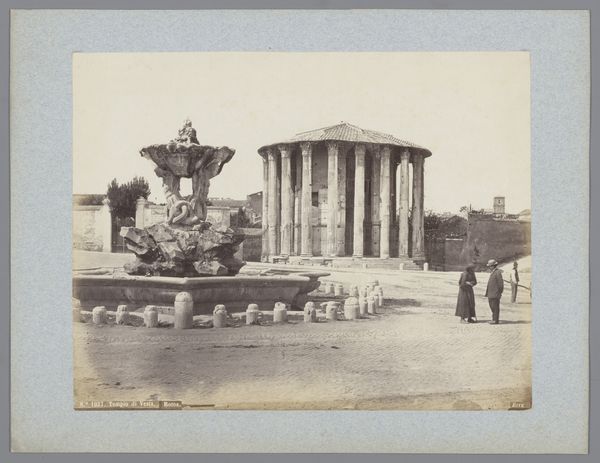
Dimensions: height 191 mm, width 247 mm, height 310 mm, width 429 mm
Copyright: Rijks Museum: Open Domain
Achille Quinet made this albumen print of the Place de la Concorde in Paris sometime in the late 19th century. Photography, though seemingly immediate, is a profoundly material process. The wet collodion process, used here, involved coating a glass plate with chemicals, exposing it in the camera while still wet, and then developing it immediately. This labor-intensive technique demanded skill and precision. The resulting glass negative was then used to create multiple albumen prints on paper, like the one you see here. The sepia tones are characteristic of albumen prints, created by coating paper with egg whites and then sensitizing it with silver nitrate. The tonal range, and its subtle gradations, is what makes these prints so appealing. Consider the immense amount of work, from the photographer's mastery of chemistry to the laborers involved in manufacturing photographic materials. This image, like all photographs, is not just a representation, but an index of human effort and industrial production. It’s a perfect example of how photography, seemingly a purely technological medium, is in fact deeply rooted in craft.
Comments
No comments
Be the first to comment and join the conversation on the ultimate creative platform.
